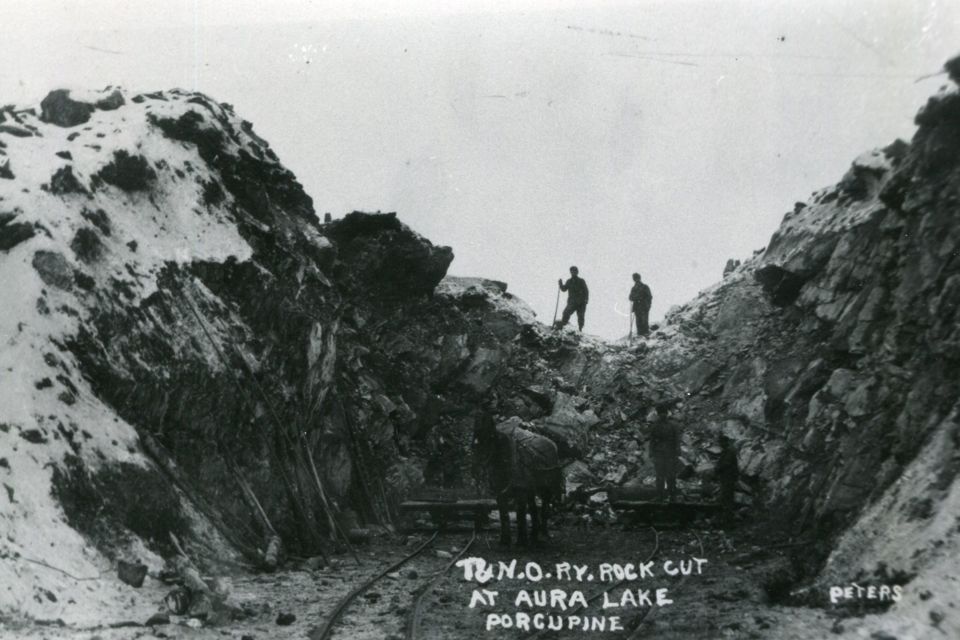Because of the gold rush, many flocked to the Porcupine — and fast! Just after the turn of the 20th century, the railway was eager to reach the Porcupine. Right up until the spring of 1911, stagecoaches and boats were the only means of entry to the camp. Transportation was good in the camp but the railway was clearly the leader in terms of the most preferred. The completed project included a 30-mile track that ran from Porquis to Golden City.
The railway line was built through the bush, along the south side of the lake, which meant it would bypass Pottsville; thus, creating South Porcupine. The official opening was Canada Day July 1911. Porquis was the terminus at this time.
Trains also brought in goods and mail and left with gold locked in steel boxes destined for Ottawa’s Mint. The railways also helped attract more recreational fun! Hockey hit it off in the region especially once the rail was done. Teams were able to travel and play tournaments against each other from neighbouring towns.
Timmins was eventually made the terminus of the Temiskaming and Northern Ontario Railway. Passengers were then able to ride from North Bay to Timmins straight through. There were also two trains daily from Toronto. At the same time there was also 24-hour freight service from the south.
The Timmins Museum: National Exhibition Centre regularly provides TimminsToday readers with a glimpse of the city’s past.
Find out more of what the Timmins museum has to offer here and read more Remember This columns here.



